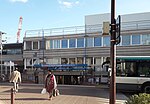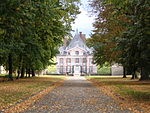Canton of Champigny-sur-Marne-2
Cantons of Val-de-MarneÎle-de-France geography stubs
The canton of Champigny-sur-Marne-2 is an administrative division of the Val-de-Marne department, Île-de-France region, northern France. It was created at the French canton reorganisation which came into effect in March 2015. Its seat is in Champigny-sur-Marne.It consists of the following communes: Champigny-sur-Marne (partly) Chennevières-sur-Marne
Excerpt from the Wikipedia article Canton of Champigny-sur-Marne-2 (License: CC BY-SA 3.0, Authors).Canton of Champigny-sur-Marne-2
Place de la Chanson, Nogent-sur-Marne
Geographical coordinates (GPS) Address Nearby Places Show on map
Geographical coordinates (GPS)
| Latitude | Longitude |
|---|---|
| N 48.81 ° | E 2.55 ° |
Address
Place de la Chanson
Place de la Chanson
94500 Nogent-sur-Marne
Ile-de-France, France
Open on Google Maps








